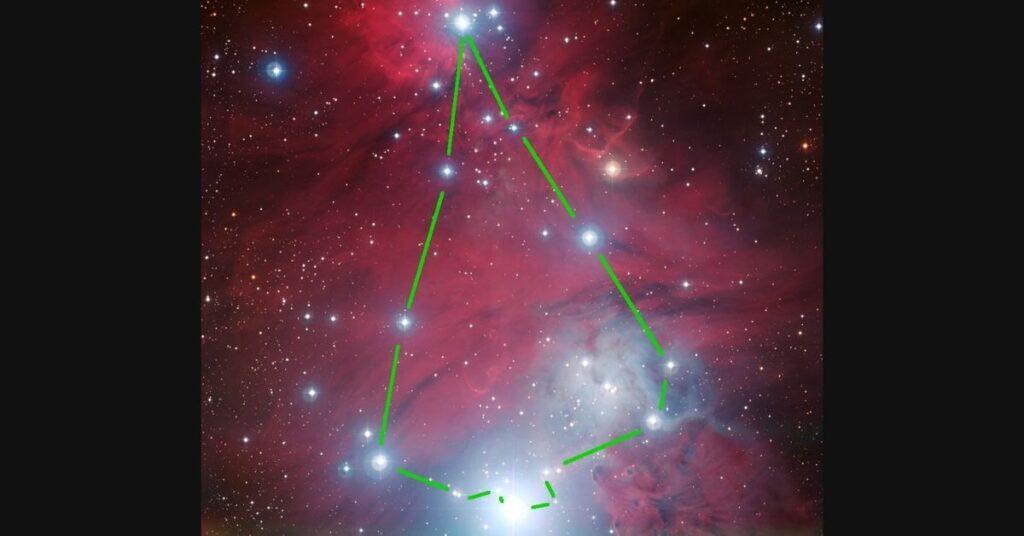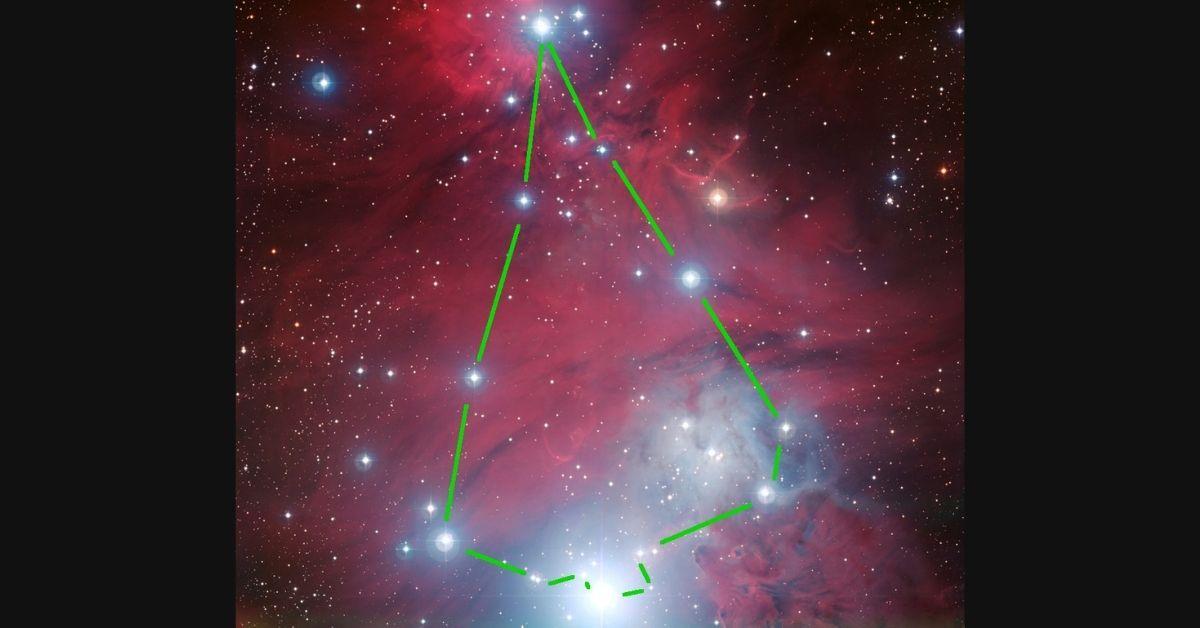
About 2,600 light-years away, in the constellation of the unicorn (Monoceros), is a section of space called the NGC 2264 region. Inside that cosmic patch is a bunch of bright lights that, because of their triangular formation, were gifted by astronomers with a truly festive name.
Located just above the Cone Nebula, the Christmas Tree Cluster is an open cluster, a group comprised of very young stars that formed from the same material and start out as gravitationally bound, but may spread out over time. There are over 600 stars in the Christmas Tree Cluster, and they’re said to be 1 to 4 million years old.
The Christmas Tree Cluster can be seen by small, low-power telescopes and even the naked eye under ideal conditions. It is even more impressive when observed through binoculars. To find the cluster, one can start by looking at the constellation Orion’s brightest stars, and then drawing a line from Bellatrix to Betelgeuse to the east (and slightly north).
The cluster was discovered by German-born British astronomer Frederick William Herschel (the same man who discovered Uranus) on January 18, 1784. However, it’s said that he initially didn’t know what he was looking at. In 1785, a day after Christmas, he took note of the nebular matter surrounding it, subsequently cataloguing the Cone Nebula.
Interestingly, part of the Christmas Tree Cluster is a smaller cluster of stars called the Snowflake Cluster. (Kind of makes you wish for a Santa Claus Cluster, doesn’t it?)
Today’s Science History Milestone: On December 24, 1818, English physicist James Prescott Joule was born. He studied the nature of heat, discovering its relationship to mechanical work. He is best known for Joule’s law, as well as for the SI unit named after him.
Still remember your 5th-grade science classes? Test your knowledge and see if you still remember these facts and fundamental concepts in human anatomy, biology, botany, and other branches of science. Click here to try the “Are You Smarter Than A Pinoy Fifth-Grader” Challenge.
Follow the hashtag #FlipFacts on Facebook and Instagram to get your regular dose of science trivia!
References:
- https://www.eso.org/public/usa/images/eso0848a/
- https://www.constellation-guide.com/christmas-tree-cluster/
- https://www.inverse.com/article/39720-what-is-the-christmas-tree-cluster-science
- https://www.syfy.com/syfywire/o-christmas-tree-cluster
- http://www.astronomy.com/magazine/ask-astro/2019/06/what-is-the-difference-between-a-globular-star-cluster-and-an-open-star-cluster
Author: Mikael Angelo Francisco
Bitten by the science writing bug, Mikael has years of writing and editorial experience under his belt. As the editor-in-chief of FlipScience, Mikael has sworn to help make science more fun and interesting for geeky readers and casual audiences alike.









